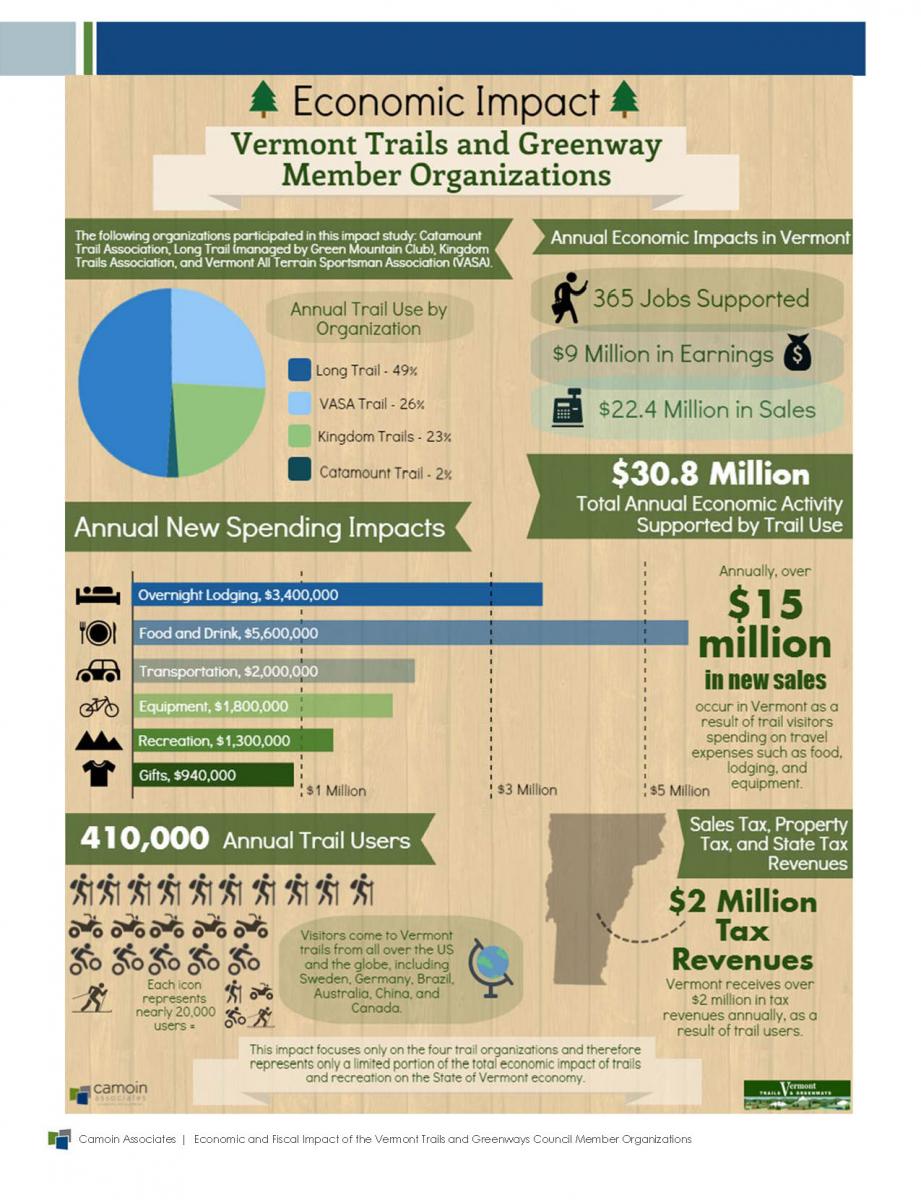WATERBURY, VT— Exploring Vermont’s outdoors by trail has always been part of the Green Mountain state’s culture, but now there is strong evidence to support how those activities bolster the state’s economy, too. The popularity of growing member-based trail networks for mountain biking, backcountry skiing, all-terrain riding and more are blazing new pathways for economic growth in the State.
Today, representatives from Federal, State, and local trail organizations came together to recognize the growing “outdoor recreation economy” and to showcase efforts to start measuring its economic contributions in dollars.
A new economic impact report released today by the Vermont Trails & Greenways Council found that four trail networks alone generate $29.6 million in economic activity annually in the State of Vermont. The totals come from looking at direct consumer spending associated with using trails (trail tickets, rentals, etc.), and the activities recreationists love doing before and after hitting the trails, such as visiting a nearby brewery or grabbing a bite to eat.
The report is being issued just several weeks after the U.S. House of Representatives unanimously passed a bill that requires the outdoor recreation industry to be quantified in the federal government’s annual calculation of national economic productivity. The bill authored by Vermont Representative Peter Welch signals a national willingness to recognize the economic benefits of land-based recreation.
Today, Representative Welch’s office received notice that the outdoor recreation bill was also passed by the U.S. Senate last night, and is now on its way to President Obama’s desk for signature.
The Vermont Trails & Greenways Council received funding to perform the economic impact report through a USDA Rural Business Opportunity Grant. The four organizations evaluated in the study are the Catamount Trail Association, the Green Mountain Club (GMC), the Kingdom Trails Association, and the Vermont ATV Sportsman’s Association (VASA). The study is the first of its kind to look at the direct economic impact from a sample of Vermont’s premier regional trail networks, uniquely combining multiple forms of motorized and non-motorized recreation all managed by non-profit statewide and regional organizations.
Although the report represents a limited sample of Vermont’s recreation economy, it provides real data showing 325 jobs are directly supported by the trail networks, and $5.6 million is spent on food and drink annually in local communities along the trail systems.
Trail stewardship organizations across Vermont have long held the vision that jobs and economic spending supported by outdoor recreation opportunities in Vermont could be considered a major contributor to the State’s economy. “The study has been long overdue,” said Danny Hale, Executive Director of VASA and Chairman of the Trails & Greenways Council.
“We finally have accurate numbers to demonstrate what we as the represented user groups of the Vermont Trail System bring to the state; as individual groups and as a combined recreational entity,” Hale stated. “Having solid numbers that outline the benefits of these trails allow our organizations as well as the state and legislature to rightfully prioritize recreation in Vermont as a major source of tourism income and local spending. It’s high time that we all recognize this opportunity.”
The Trails & Greenways Council is a non-profit organization established by the Vermont Legislature in 1995 whose mission is to ensure that people will always have access to adequate land and water-based trails and greenways in Vermont. The Council’s driving force is the diverse membership of organizations managing recreational trails systems and infrastructure, and the cohesiveness that results from bringing these groups together under a unified voice. The Trails and Greenways Council assists the Department of Forests, Parks and Recreation in shaping recreation policy and fosters partnerships with private organizations, municipalities, and trail-based communities.
To view the economic impact study for the Vermont Trails & Greenways council, go to the FPR Partners Page.
For more information about the Outdoor Recreation’s Economic Contributions (REC) Act as passed in the U.S. House and U.S. Senate, go to https://www.congress.gov/bill/114th-congress/house-bill/4665.
# # #
Media Contact:
Danny Hale, Chairperson, Vermont Trails & Greenways Council, 802-353-6608
Jessica Savage, Department of Forests, Parks & Recreation, 802-249-1230

